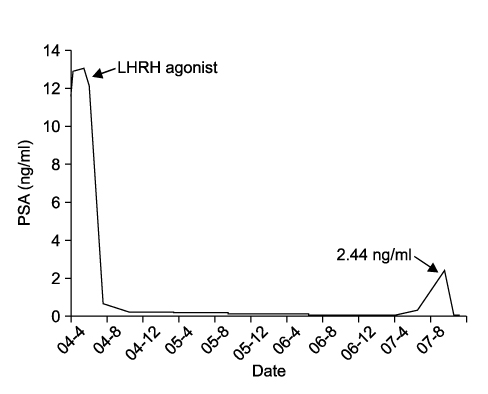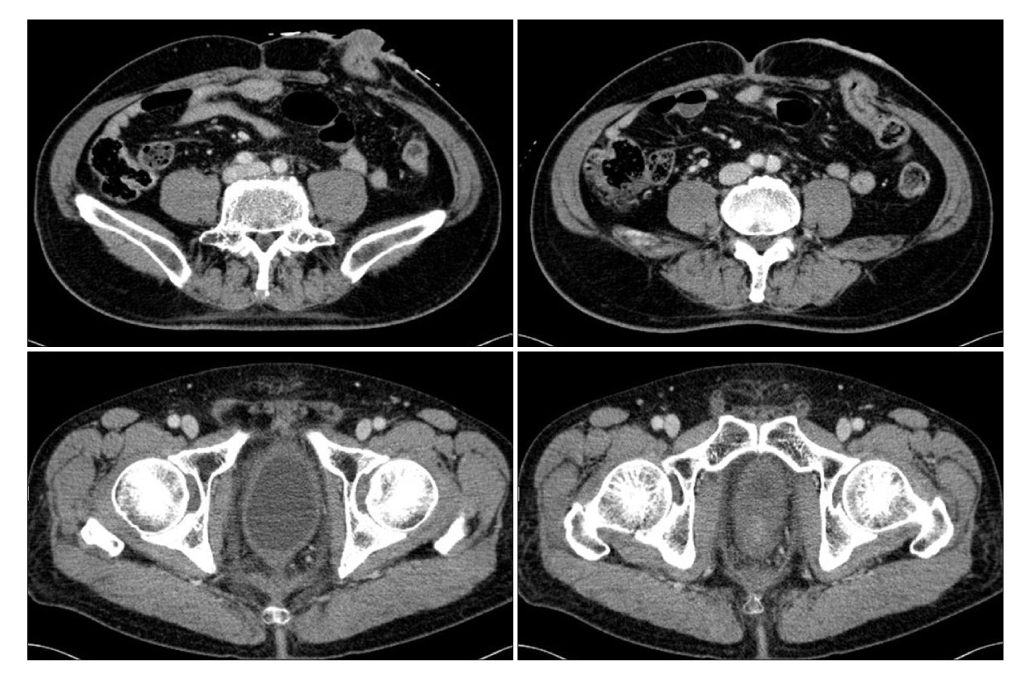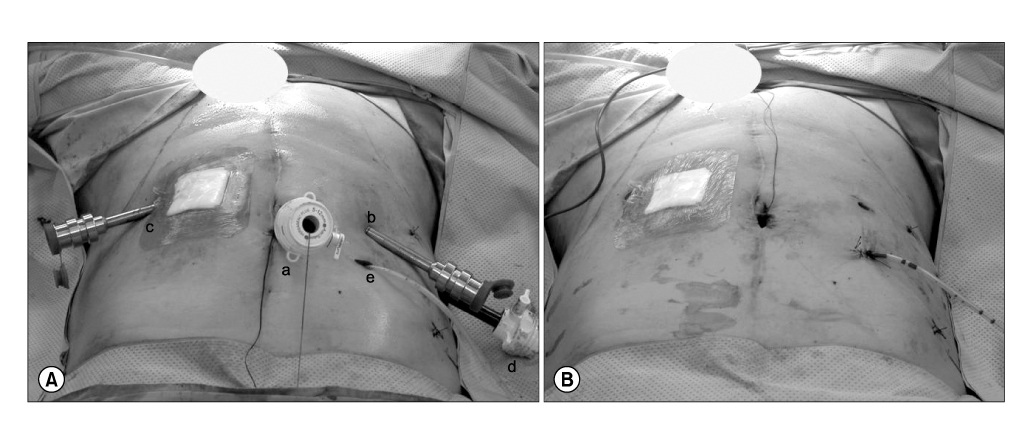Korean J Urol.
2008 May;49(5):464-468. 10.4111/kju.2008.49.5.464.
Robotic Prostatectomy in a Patient with a Miles' Operation
- Affiliations
-
- 1Department of Urology and Urological Science Institute, Yonsei University College of Medicine, Seoul, Korea. youngd74@yuhs.ac
- KMID: 1204531
- DOI: http://doi.org/10.4111/kju.2008.49.5.464
Abstract
- Robotic prostatectomy(RP) has recently been added to the treatments for localized prostate cancer and it is increasingly being utilized at many centers. The benefits of minimally invasive surgery, the enhanced functional outcomes and the increased patient demand have led to the popularity of this surgical technique. However, RP has been reported to be technically challenging in patients with a history of prior complex lower abdominal/pelvic surgery, morbid obesity, a large prostate, prior pelvic irradiation, neoadjuvant hormonal therapy or prior prostate surgery. We report here on our experience of robotic prostatectomy (RP) in a prostate cancer patient with a Miles's operation and this pateint had undergone adjuvant chemotherapy and pelvic irradiation for rectal cancer.
MeSH Terms
Figure
Cited by 1 articles
-
Comparison of Extraperitoneal and Transperitoneal Robot-Assisted Radical Prostatectomy in Prostate Cancer: A Single Surgeon’s Experience
Yong Seung Lee, Won Sik Ham, Won Tae Kim, Hui Jung Joo, Jin Sun Lee, Young Deuk Choi
Korean J Urol. 2009;50(3):251-255. doi: 10.4111/kju.2009.50.3.251.
Reference
-
1. Erdogru T, Teber D, Frede T, Marrero R, Hammady A, Rassweiler J. The effect of previous transperitoneal laparoscopic inguinal herniorrhaphy on transperitoneal laparoscopic radical prostatectomy. J Urol. 2005. 173:769–772.2. Singh A, Fagin R, Shah G, Shekarriz B. Impact of prostate size and body mass index on perioperative morbidity after laparoscopic radical prostatectomy. J Urol. 2005. 173:552–554.3. Stolzenburg JU, Ho KM, Do M, Rabenalt R, Dorschner W, Truss MC. Impact of previous surgery on endoscopic extraperitoneal radical prostatectomy. Urology. 2005. 65:325–331.4. Perer E, Lee DI, Ahlering T, Clayman RV. Robotic revelation: laparoscopic radical prostatectomy by a nonlaparoscopic surgeon. J Am Coll Surg. 2003. 197:693–696.5. Pattaras JG, Moore RG, Landman J, Clayman RV, Janetschek G, McDougall EM, et al. Incidence of postoperative adhesion formation after transperitoneal genitourinary laparoscopic surgery. Urology. 2002. 59:37–41.6. Weibel MA, Majno G. Peritoneal adhesions and their relation to abdominal surgery. A postmortem study. Am J Surg. 1973. 126:345–353.7. Rassweiler J, Sentker L, Seemann O, Hatzinger M, Rumpelt HJ. Laparoscopic radical prostatectomy with the Heilbronn technique: an analysis of the first 180 cases. J Urol. 2001. 166:2101–2108.8. Guillonneau B, Vallancien G. Laparoscopic radical prostatectomy: the Montsouris experience. J Urol. 2000. 163:418–422.9. Cook H, Afzal N, Cornaby AJ. Laparoscopic hernia repairs may make subsequent radical retropubic prostatectomy more hazardous. BJU Int. 2003. 91:729.
- Full Text Links
- Actions
-
Cited
- CITED
-
- Close
- Share
- Similar articles
-
- Robotic Prostatectomy: What We Have Learned and Where We Are Going
- A Unique Instrumental Malfunction during Robotic Prostatectomy
- Changes in Patterns of Radical Prostatectomy due to Diffusion of Robotic Surgical System: A Nationwide Study Using Health Insurance Claims Data
- The Risk Factors of Postoperative Respiratory Insufficiency after Prolonged Robotic Radical Prostatectomy
- Past, present and future of urological robotic surgery




